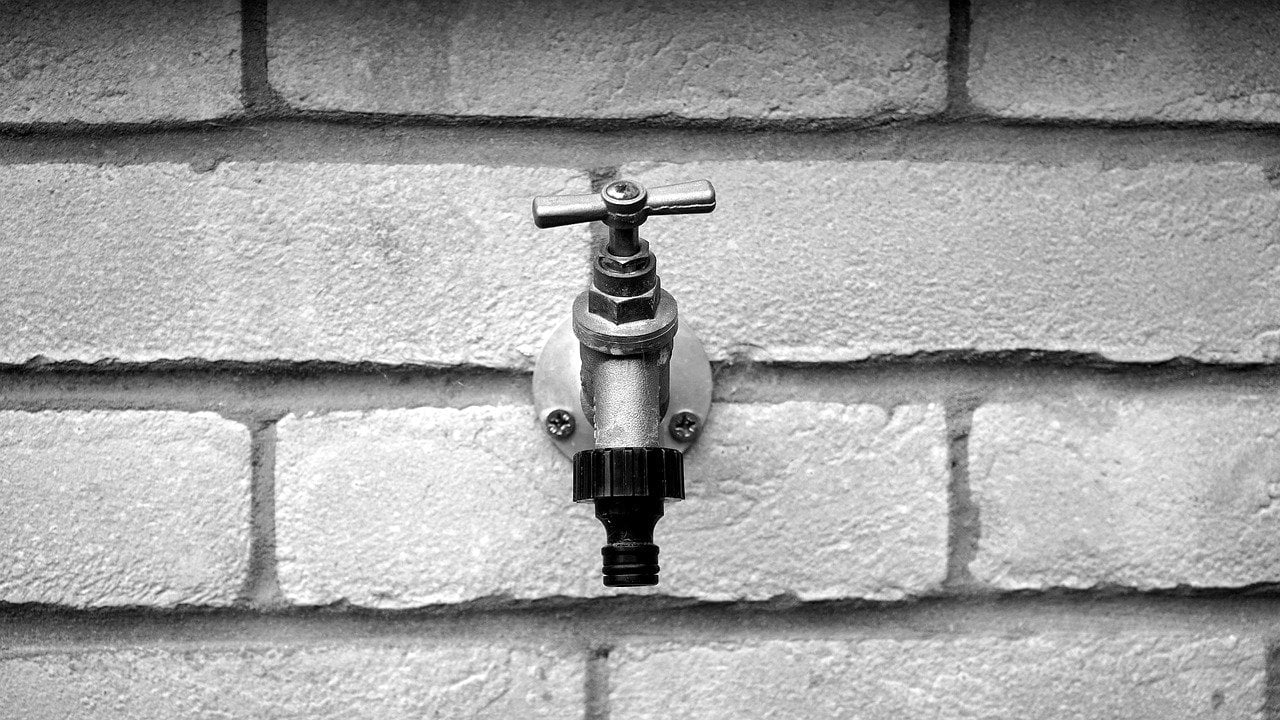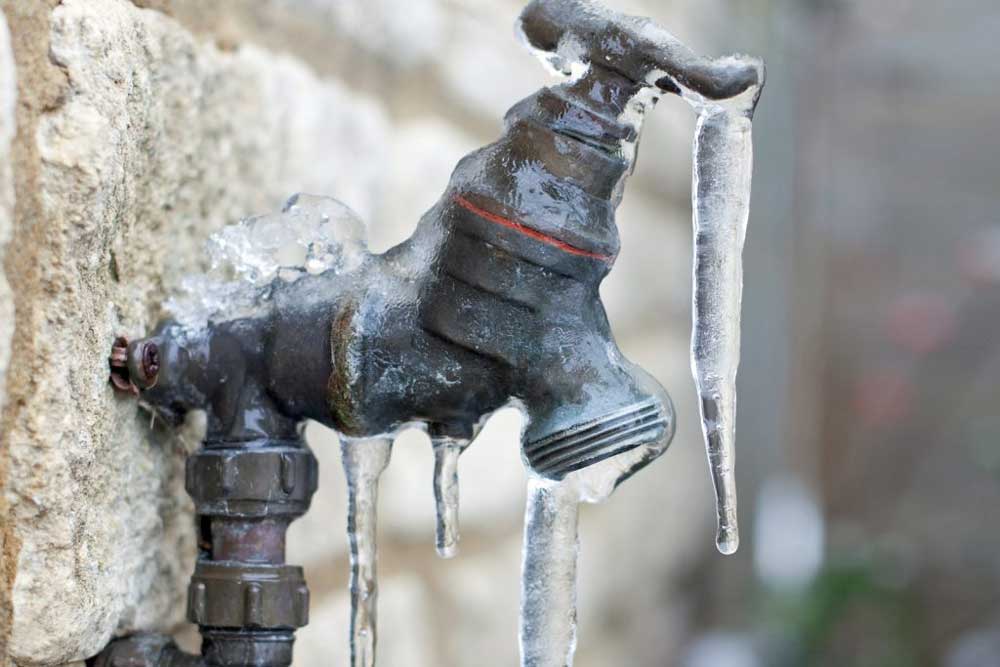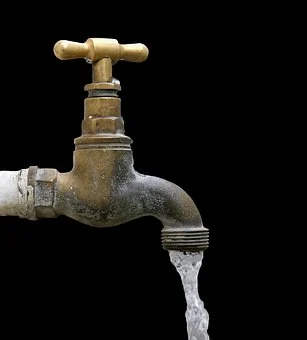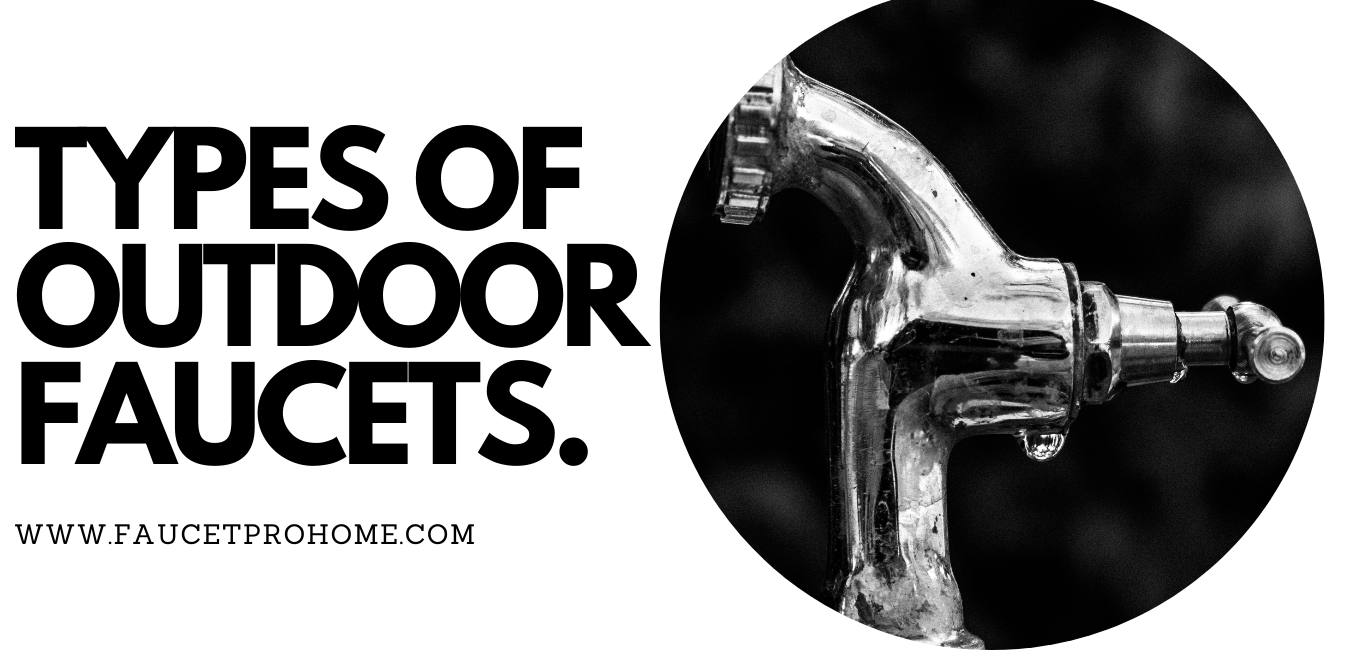
How to Protect Outdoor Faucets from Freezing
During winter, protecting outdoor faucets from freezing is crucial. Wrapping them with foam pipe insulation or using insulation tubes can help. Placing a bucket underneath the spout retains warmth. You can also employ anti-freeze or heat tape, ensuring it’s applied inside the wall where the pipe enters the house to prevent spring water leaks.
What are the Causes of Outdoor Faucet Freezing?

The most common causes of outdoor faucet freezing are the freezing temperature, frost on the water lines, and high air pressure.
Outdoor faucet freezing is primarily caused by:
- Freezing Temperature: When the outdoor temperature drops significantly, water in pipes and faucets can freeze.
- Frost on Water Lines: The formation of frost on water lines can lead to freezing.
- High Air Pressure: Unusually high air pressure can contribute to freezing.
Other factors include:
- Extreme Water Temperature: Water that is too cold or too hot can increase the risk of freezing.
- Frozen Ground Pipes: Frozen water pipes in the ground nearby can affect faucet freezing.
- Inappropriate Plumbing: Using the wrong type of plumbing for the environment, such as copper pipes in low-temperature climates, can be a cause.
- Natural Circulation: Faucets freeze when water inside the pipes and faucets is below freezing and cannot flow easily, while the ground outside has warmer water that circulates more efficiently, causing frost inside the pipe.
- Low Outdoor Temperature: Temperatures below 40 degrees increase the likelihood of faucet freezing by slowing down water circulation.
- Low Indoor Temperature: Indoor temperatures below 40 degrees can also increase the risk of faucet freezing due to reduced water circulation.
- Insufficient Heating: Inadequate home heating can significantly raise the chances of faucet freezing by slowing down water circulation.
Reasons to Protect Outdoor Faucets from Freezing

There are compelling reasons to protect outdoor faucets from freezing:
- Prevent Pipe Damage: Freezing temperatures can cause water in pipes to turn into ice, leading to pipe bursts and costly repairs.
- Property Damage: Burst pipes from frozen faucets can result in property damage, including flooding and structural issues.
- Home Flooding: Faucet freezing can lead to indoor flooding if not addressed promptly, causing further damage to your home.
- Warning Signs: Some faucets come equipped with warning signs to alert you to potential breakage before it occurs, allowing for timely action.
- Outdoor Fountains: Many communities have outdoor fountains that require protection from freezing to ensure they continue to function properly during winter.
- Scenic Enjoyment: Outdoor fountains provide beautiful scenery for residents and tourists, enhancing the aesthetics of the area year-round.
- Preserve Functionality: Protecting outdoor faucets helps ensure they remain functional and prevent disruptions due to freezing.
Five Steps to Prevent Outdoor Faucets from Freezing:

1. Disconnect Your Hoses in Fall
As the cold winter approaches, it’s crucial to take these steps to protect your outdoor faucets:
- Risk of Freezing: Cold winter temperatures can expose water pipes to freezing conditions, potentially causing pipes to burst and significant damage to your home.
- Avoid Leaving Hoses Attached: Leaving garden hoses connected throughout the winter is a common mistake. When water inside the hose freezes, it can lead to burst pipes and even indoor flooding.
- Turning Off Faucet Valves May Not Be Enough: Even if you turn off faucet valves as winter approaches, exposed pipes can still freeze and burst if left connected too long.
- Proactive Measure: To prevent freezing and bursting, disconnect your outdoor hoses in the fall. You may need a wrench or pliers to do so. In some cases, it might also be necessary to shut off or open valves at the meter to fully protect your faucets from the cold.
2. Use an Outdoor Faucet Cover

Protecting your outdoor faucets from freezing is essential due to their exposure to various weather conditions. Here’s how to safeguard them during winter:
- Weather Exposure: Outdoor faucets endure significant exposure to weather and temperature fluctuations, making them vulnerable to freezing.
- Preserve Aesthetics: During the winter, the appearance of your home’s exterior is crucial. An ice-covered or frosty outdoor faucet can detract from its appeal.
- Install a Faucet Cover: To prevent freezing and maintain your home’s appearance, consider installing an outdoor faucet cover. These covers allow ice and frost to slide off, ensuring your water supply remains unaffected.
- Wide Range of Options: You can find a variety of faucet covers at hardware stores, home improvement centers, and online marketplaces. Explore different options to choose the one that suits your needs best.
3. Install a Frost-Free Faucet
Frost-free faucets are a reliable solution for preventing freezing and bursting, ensuring your outdoor faucets stay protected during the winter season. Here’s how to install one:
- Preventing Freezing: Frost-free faucets are designed to prevent freezing and bursting, offering robust protection for outdoor faucets.
- Installation Process: Installing a frost-free faucet is a relatively simple process that typically takes no more than one to two hours. Follow these steps:
- Turn Off Water Supply: Begin by turning off the water supply valve on the house side of the frost-free faucet.
- Remove Old Drain Valve: Remove the old drain valve located beneath the sink and discard it.
- Prepare Pipe Insulation: Cut a hole in a section of pipe insulation large enough to accommodate a slip nut, allowing it to be screwed onto the threaded pipe beneath the sink.
- Attach Slip Nuts: Slide a slip nut onto each end of the pipe insulation, then screw them onto both ends of the pipe.
Frost-free faucets are gaining popularity due to their ability to conserve water and energy during the winter. These faucets maintain an efficient water flow by utilizing a two-part system with an electric element to heat the exterior section, preventing freezing. They are commonly installed by farmers requiring access to freshwater for their livestock and homeowners aiming to protect their property from winter-related issues like ice dams.
4. Monitor Water Pressure
Monitoring water pressure is a fundamental task that all water users should undertake. Low water pressure can be indicative of various issues, ranging from minor concerns like clogged or frozen pipes to more severe and urgent plumbing problems. As outdoor faucets face potential challenges during the winter months, it’s crucial to keep a close watch on water pressure to prevent any issues from escalating. Here are some key points to consider:
- Significance of Water Pressure: Water pressure is a critical aspect of plumbing systems, affecting the functionality of faucets and overall water flow.
- Potential Winter Challenges: During winter, outdoor faucets are vulnerable to freezing temperatures and extreme weather conditions, which can lead to various problems if not addressed promptly.
- Routine Inspection: Regularly inspect your outdoor faucets for any signs of low water pressure or unusual behavior.
- Clogged or Frozen Pipes: Low water pressure could indicate clogged or frozen pipes, especially in cold weather. Address these issues promptly to avoid more significant problems.
- Plumbing Concerns: In some cases, low water pressure may be a symptom of underlying plumbing issues that require professional intervention. If you suspect a serious problem, contact a plumber immediately.
Monitoring water pressure in your outdoor faucets is a simple yet essential step to ensure their functionality and prevent potential winter-related issues.
5. Drain any Residual Water from the Faucet and Pipe
Protecting outdoor faucets during winter involves draining any residual water from the faucet and pipe. This preventive measure is crucial to avoid potential freezing and pipe damage. Here’s a breakdown of this essential step:
- Preventing Freezing: Freezing temperatures can lead to water expansion, causing pipes to rupture. To safeguard your outdoor faucets, draining residual water is a key strategy.
- Comprehensive Approach: Ensure that all remaining water is removed from both the faucet and the connecting pipe to minimize the risk of freezing.
- Additional Precaution: After draining, consider pouring a bucket of boiled water down the faucet and pipe. This added step helps further protect against freezing by warming the plumbing system.
- Preventive Maintenance: Regularly perform this draining process as part of your winterization routine to maintain the functionality of your outdoor faucets.
By diligently draining any remaining water from your outdoor faucet and pipe, you can significantly reduce the likelihood of freeze-related damage, ensuring their continued performance during the winter months.
Conclusion
Safeguarding outdoor faucets from freezing is essential to prevent costly damage and ensure uninterrupted functionality. By disconnecting hoses, using faucet covers, installing frost-free faucets, monitoring water pressure, and draining residual water, you can effectively protect your outdoor fixtures during winter. These proactive measures will help you maintain your faucets and extend their lifespan, ultimately saving you time and money in the long run.









